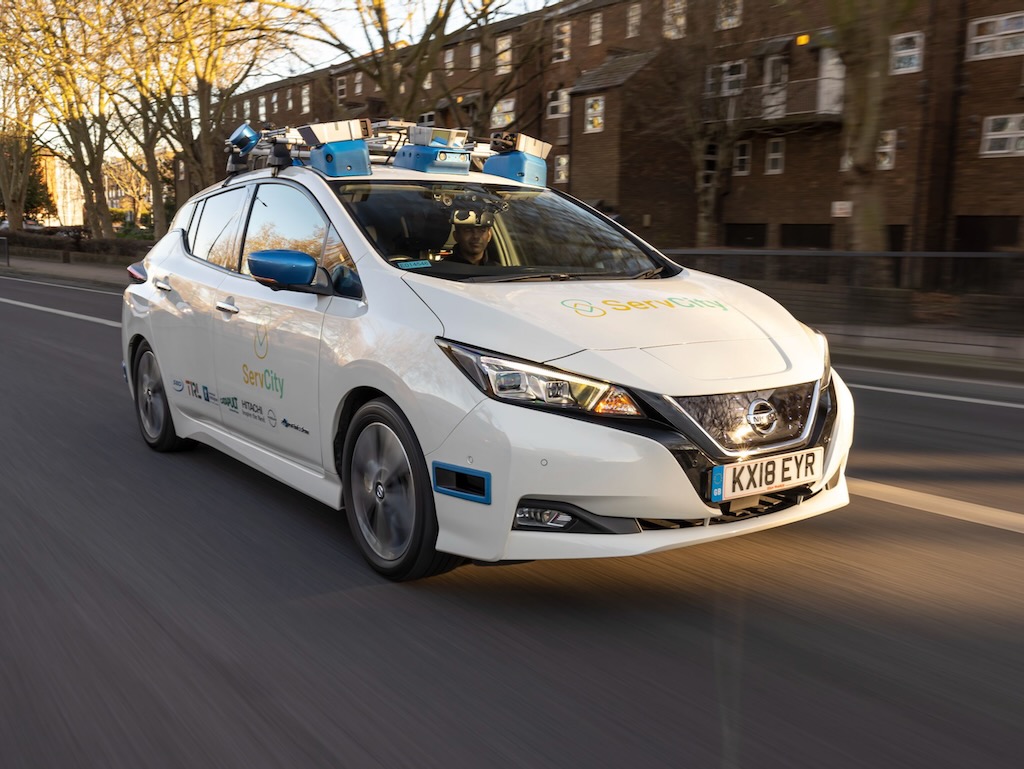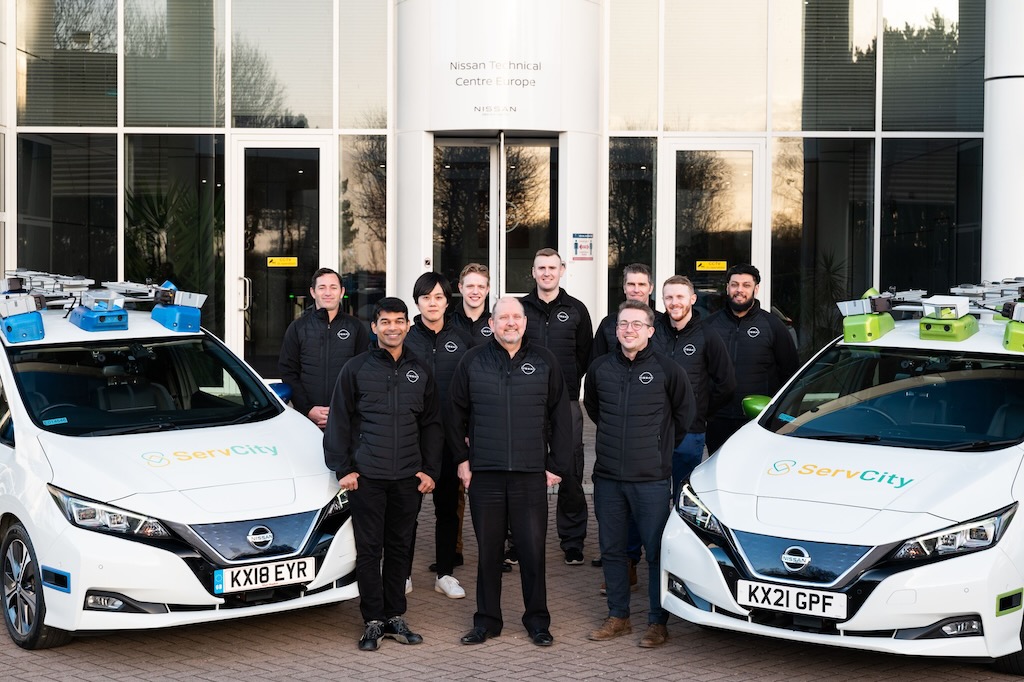
Nissan’s ServCity speeds up autonomous mobility in cities
The ServCity project, a consortium project backed by Nissan and supported by the UK Government, has successfully completed its three-year program to deploy advanced autonomous drive technology on the roads of London, integrated with the city’s infrastructure. The ServCity project has been a significant step towards achieving the goal of developing autonomous mobility in complex urban environments, which will improve traffic flow, reduce congestion, and minimize the risk of accidents and fatalities. The project has involved collaboration with multiple partners, including the Connected Places Catapult, TRL, Hitachi Europe, the University of Nottingham, and SBD Automotive.
The ServCity project has used a 100% electric Nissan LEAF as a test vehicle, which has completed more than 1,600 autonomous test miles on increasingly challenging routes. The vehicle has been integrated with the Smart Mobility Living Lab (SMLL) in Greenwich, which has used its network of roadside sensors and data processing suite to create a cooperative infrastructure environment. This infrastructure can detect an object that is not within the line of sight of the vehicle, such as around a corner or in the distance, and inform the vehicle so that it can maneuver to ensure smooth traffic flow, such as changing lanes.
The ServCity project has developed a blueprint to help UK cities incorporate advanced autonomous vehicle technologies with city infrastructure. The project has explored the potential for “Robotaxi” style services in the future, which will benefit city residents and commuters. The project has been jointly funded by the UK government and consortium partners, and was administered by Innovate UK. The project has been an important means of giving people confidence in the safety of autonomous vehicles, and the project’s final demonstrations will showcase advanced autonomous drive technologies integrated with CAV-ready infrastructure on the streets of Greenwich.
The ServCity project has been an important part of Nissan’s long-term vision, Nissan Ambition 2030, which aims to create a cleaner, safer, and more inclusive world. Through its world-class R&D base in Cranfield in the UK, Nissan is continuously innovating to bring cutting-edge, purpose-driven technologies that benefit its customers. Nissan’s commitment to advancing its autonomous drive capability and expertise is critical to achieving its long-term vision, and research projects such as ServCity are vital to the evolution of technology.
Robert Bateman, Manager, Nissan Technical Centre Europe, and Nissan Project Manager for ServCity, said: “Not only has Nissan provided the 100% electric Nissan LEAF as a test vehicle, our talented group of engineers have also contributed to the research and development of cutting-edge autonomous drive technology for use within the project. This has enabled the development of a test vehicle that is able to autonomously navigate the busy streets of London alongside other road users – both stationary and moving – while connected with city infrastructure.”
Transport Minister Jesse Norman said: “The Government has invested £7million in this project to be at the forefront of innovation. Since then, ServCity has proven key to answering the practical questions of how to integrate self-driving vehicles into cities for the public good.”
The ServCity project has been an important means of achieving the long-term vision of developing autonomous mobility in complex urban environments. The project’s successful deployment of advanced autonomous drive technology in London is a significant achievement, and its blueprint for incorporating advanced autonomous vehicle technologies with city infrastructure will be valuable for OEMs, transport providers, and city planners in the UK’s cities. The project has also been an important step towards achieving Nissan’s long-term vision of creating a cleaner, safer, and more inclusive world.




